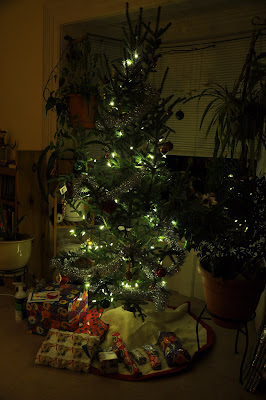December 2012, Volume 10, Number 12
Bats in the News -
WNS Survivors Face a New Risk
Some hibernating bats emerge from a
wintertime exposure to White-nose Syndrome with few symptoms of the
devastating disease that has killed more than 5.7 million bats in North
America. Then, just as they are recovering from the infection, they seem
to be attacked by their own immune systems, the U.S. Geological Survey
said in a news release.
Researcher Carol Meteyer, of the USGS, and colleagues suggest that
these bats show evidence of "immune reconstitution inflammatory
syndrome" (IRIS) – a condition first described in HIV-AIDS patients.
This hypothesis, proposed in the journal Virulence, represents the first
natural occurrence of IRIS ever reported. "For both humans and bats,
IRIS can be fatal," the agency said.
Meteyer's co-authors are Daniel Barber and Judith Mandl at the National Institute of Allergy and Infectious Diseases.
With IRIS, after an organism's immune system has been suppressed for a time then reactivates, it can detect an infection and "go into overdrive, resulting in severe inflammation and tissue damage in infected areas," the scientists said.
"The potential discovery of IRIS in bats infected with White-nose Syndrome is incredibly significant in terms of understanding both the reasons for bat mortality and basic immune response," said USGS Director Marcia McNutt. "This discovery could also prove significant for studies on treatment for AIDS."
In AIDS patients, the immune system is suppressed as the HIV virus attacks white blood cells. It is reactivated through antiretroviral therapy. But in patients with secondary infections, the renewed immune system overacts and can cause major damage to healthy tissue.
Bats' immune-system activity (along with body temperature and metabolism) is dramatically reduced to conserve energy during hibernation. This allows the Geomyces destructans fungus, which causes WNS, to invade the bat's muzzle, ears and wings.
"Animals that survive WNS often "emerge from hibernation with normal-looking wings," Science News said in a report on the research. "But as their body temperature warms back up and their immune systems reactivate, their health takes a nosedive. Within days, dark patches riddle their wings. ... Over the next two weeks, these and other immune cells encapsulate the fungal patches, walling them inside scablike structures. Soon the scabs fall away, leaving the wings with huge holes. Flight becomes limited, if not impossible."
"It's cellular suicide. It comes out in a huge wave, going out to those areas of infection and killing everything," Meteyer told The Washington Post.
"We see strong similarities between human IRIS and the pathology associated with WNS," she said in the news release. "We hope that these findings will stimulate more experimental studies that yield insight into the role of the immune response during IRIS in humans as well as hibernating bats."
 |
| A little brown bat with White-nose Syndrome. Photo courtesy of Al Hicks, NY Dept. of Environmental Conservation |
Meteyer's co-authors are Daniel Barber and Judith Mandl at the National Institute of Allergy and Infectious Diseases.
With IRIS, after an organism's immune system has been suppressed for a time then reactivates, it can detect an infection and "go into overdrive, resulting in severe inflammation and tissue damage in infected areas," the scientists said.
"The potential discovery of IRIS in bats infected with White-nose Syndrome is incredibly significant in terms of understanding both the reasons for bat mortality and basic immune response," said USGS Director Marcia McNutt. "This discovery could also prove significant for studies on treatment for AIDS."
In AIDS patients, the immune system is suppressed as the HIV virus attacks white blood cells. It is reactivated through antiretroviral therapy. But in patients with secondary infections, the renewed immune system overacts and can cause major damage to healthy tissue.
Bats' immune-system activity (along with body temperature and metabolism) is dramatically reduced to conserve energy during hibernation. This allows the Geomyces destructans fungus, which causes WNS, to invade the bat's muzzle, ears and wings.
"Animals that survive WNS often "emerge from hibernation with normal-looking wings," Science News said in a report on the research. "But as their body temperature warms back up and their immune systems reactivate, their health takes a nosedive. Within days, dark patches riddle their wings. ... Over the next two weeks, these and other immune cells encapsulate the fungal patches, walling them inside scablike structures. Soon the scabs fall away, leaving the wings with huge holes. Flight becomes limited, if not impossible."
"It's cellular suicide. It comes out in a huge wave, going out to those areas of infection and killing everything," Meteyer told The Washington Post.
"We see strong similarities between human IRIS and the pathology associated with WNS," she said in the news release. "We hope that these findings will stimulate more experimental studies that yield insight into the role of the immune response during IRIS in humans as well as hibernating bats."

































































